Other radios based on the same chassis:
6-valve plus magic eye tuning, all-wave spiral dial radio available in several cabinet designs across at least four different brands.
The Columbus model 38 used a diamond-shaped point of light to indicate the frequency on a unique spiral-wrapped dial. They called this system "Spotlight Spiral Dial" tuning.
The point of light is generated by two aluminium discs with opposing curved slots cut in them. They rotate independently of each other at different speeds, both in sync with the tuning gang in order to produce a hole where the two spirals meet that indicates the position of the tuning gang. This point was also able to be moved slightly by actuating the band switch, which would position the pointer over the chosen band spiral. This meant everything in the dial, including the dial glass, had to be perfectly made and aligned.
This design is quite unique and at first glance it seems like having an effectively very long dial scale (around 2 feet or 600mm) was a really good idea, and one that should have both survived for a few years, and caught on with other manufacturers - but the dial mechanism was also very complex and quite fiddly - including pulleys, levers, two custom aluminium plates separated by black paper, a rubber drive belt and tensioner, a dial chain (in place of the usual cord), a dual-speed vernier drive and meshed gears, and the author has not yet seen one that wasn't broken in at least 2 different ways.
The actual engineering implementation of this system was problematic and also caused Radio Corp to be late to market with what was their premier set for the 1937 model year* - causing friction between board members and factory staff, with blame being laid in equal parts on the MD, William Marks, and the factory manager. This would eventually lead to a new factory manager being appointed and some talk of closer oversight on spending in the factory.
All this drama aside, the whole dial 'spreading' idea was obsoleted by the advent of bandspreading in the model 75 a couple of years later. The broadcast band (AM) didn't need to be spread out as the stations were easy to find and tune - it was really just shortwave stations that required a high degree of precision on the part of the user to tune in (and keep tuned in). Since bandspreading required no special dial arrangement to implement, it was cheaper more effective than expanding the actual scale in the way that the model 38 did - and this meant that what is now regarded as one of the most impressive dial arrangements ever seen on a New Zealand radio was very short lived - its unlikely that any spiral dials were still in production after 1938.
None of the cabinet designs have a known nickname, although the slatted front model was advertised as being scientifically designed to spread all sound frequencies evenly.
The upright console seen above was sighted for sale in Australia and the cabinet may be local to that market.
There is a battery version of this set: the model 77, and a 9-valve (all metal valves) version, the model 43.
*A Courtenay spiral dial model has been sighted with a plain dial, and this might have been a stop-gap measure to have something on the market while the spiral dial was being finished.

Newspaper Clipping, Origin Unknown (re-coloured from a black and white original)

POVERTY BAY HERALD, 22 JUNE 1938

EVENING POST, 21 JUNE 1937
Intermediate Frequency: 456kc/s
Frequency Bands: 3
Chassis Notes(most schematics can be clicked to download a full size version)
 Service information RCNZ_-_model_38_-_6V_AW_AC_-_1937.pdf
Service information RCNZ_-_model_38_-_6V_AW_AC_-_1937.pdf
Take note regarding diode load resistor value:
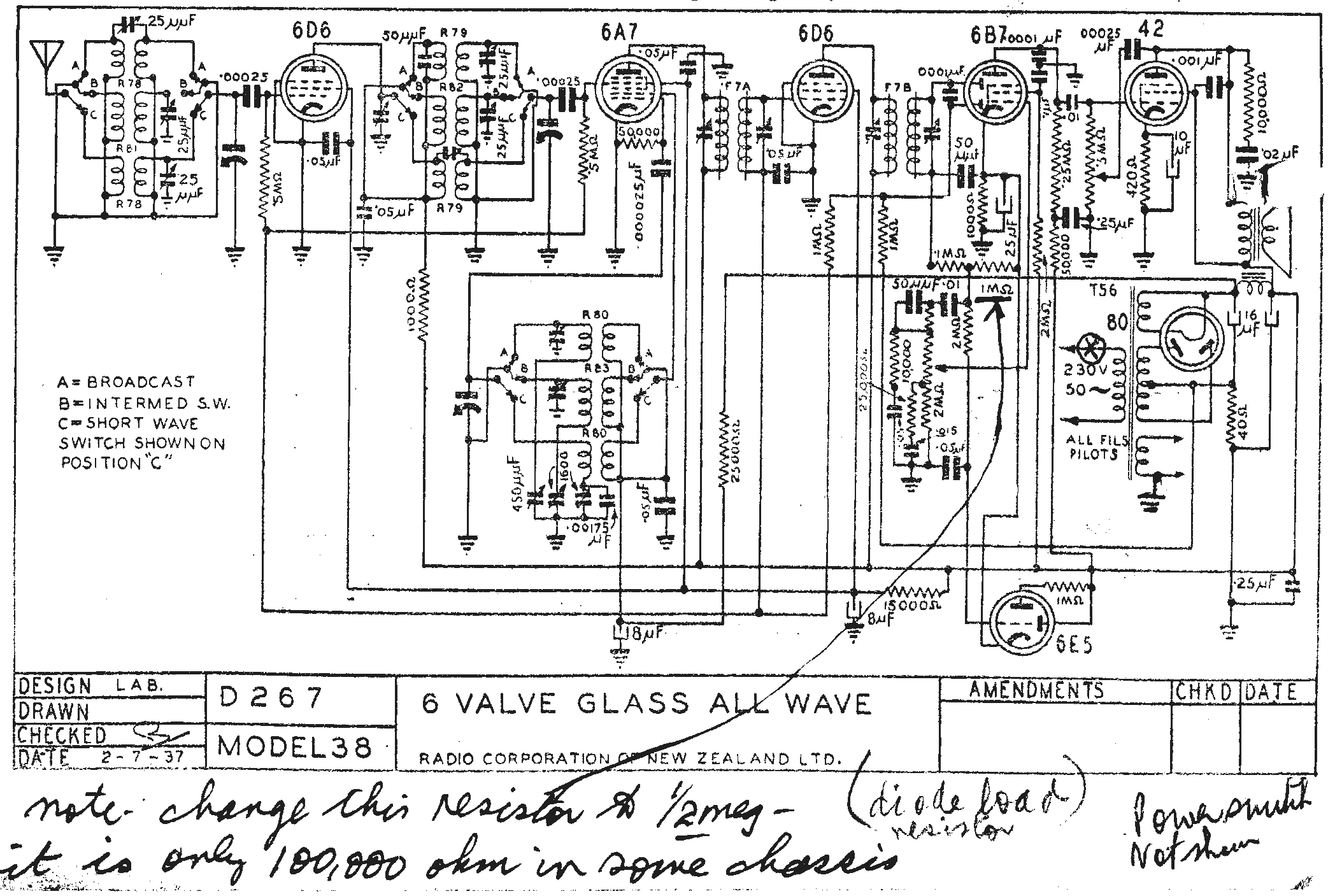
3-band (all-wave) chassis covering broadcast (550 - 1500kHz), Intermediate SW (2.1 - 6MHz) and SW (6 - 18MHz).
The chassis uses a unique spiral dial tuning system with an effective tuning distance of over 2 feet and fast / slow tuning to provide fine control of the frequency. The dial assembly consists of either a red-tinted spiral line of light or a red dot (depending on brand) that indicates the frequency on a novel trio of spirals for the three bands. The band selector slightly rotates the system so that the dot or the end of the line aligns with the correct band.
The spiral tuning system is complex, and unless its been restored it always seems to be broken on sets found today. Repairing and setting the dial up takes some patience and trial & error, and while there is indication in the model 38 service documentation that there was to be a service bulletin from RCNZ for the dial assy, it has never been sighted.
Repair of the dial plates often requires the plates to be separated (on a lathe is easiest), then the old and normally torn / unglued paper to be removed and a new piece made. The red cellophane is often damaged as well and will most likely need replacing.
Note that the following images are from the rebuilding of the Pacific variant of the model 38, which used a line of light, not a diamond shaped spot. This was achieved with a leaf-shaped cutout on one plate rather than a curved line. Also note that one layer of cheap red cellophane (used here) is probably not enough and two layers would probably provide a better red shade - a thicker material like the colour gels used in stage lighting might provide better results as well.
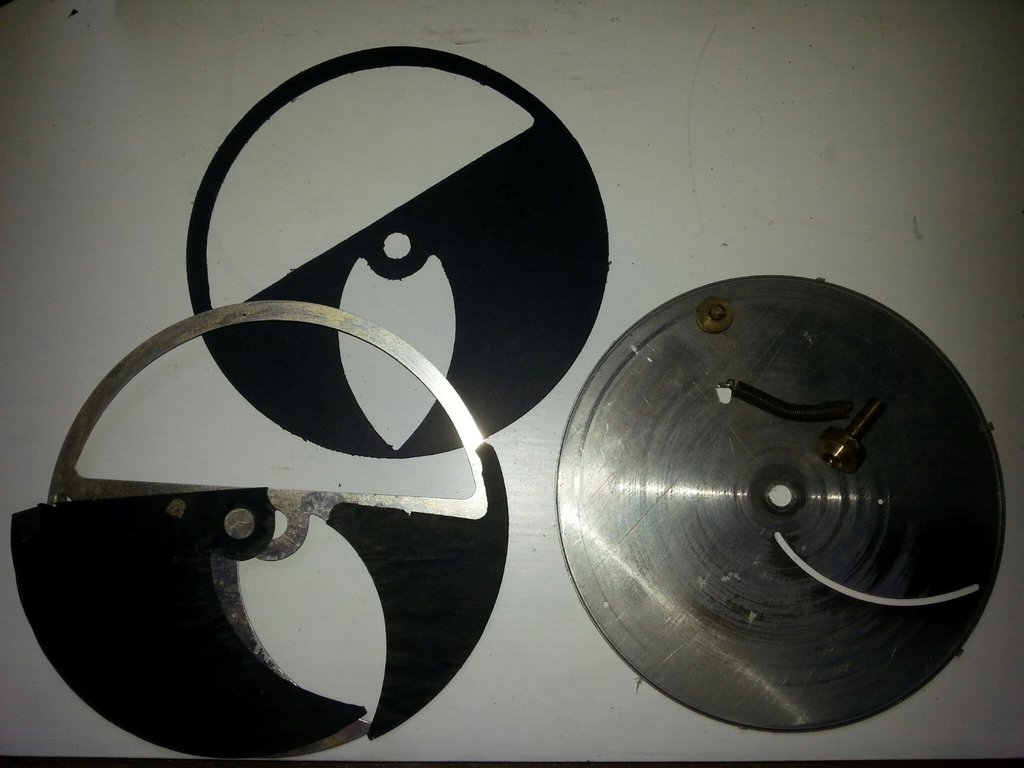
Dial assembly split - new hand-cut black paper template shown top left
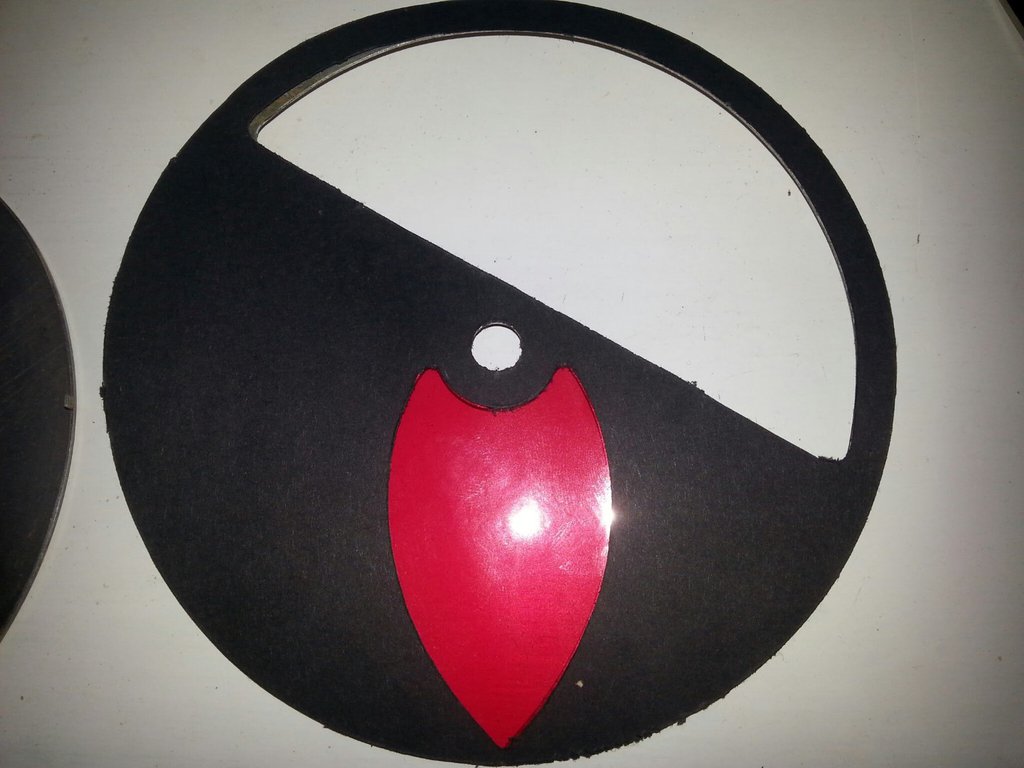
New paper and cellophane glued in place ready to reassemble

Dial plates rebuilt, showing operation
It appears like the original dials used chain, possibly to eliminate any chance of stretch and to ensure accuracy of the pointer - however nylon dial cord has been used successfully in recent repairs. The dial cord runs from the tab at the outside edge of the back of the plate around the pulley then around the central bakelite spiral pully (which should be free to spin on the shaft) 2½ times then to the arm on the wave-change switch which should be roughly 45º above horizontal from the shaft when switched to the middle band to give correct actuation - this will require experimentation. Ensure the dial cord sits in the right place on the central pully so it doesn't run off either end, and watch the spike that it seems to have - purpose unknown?
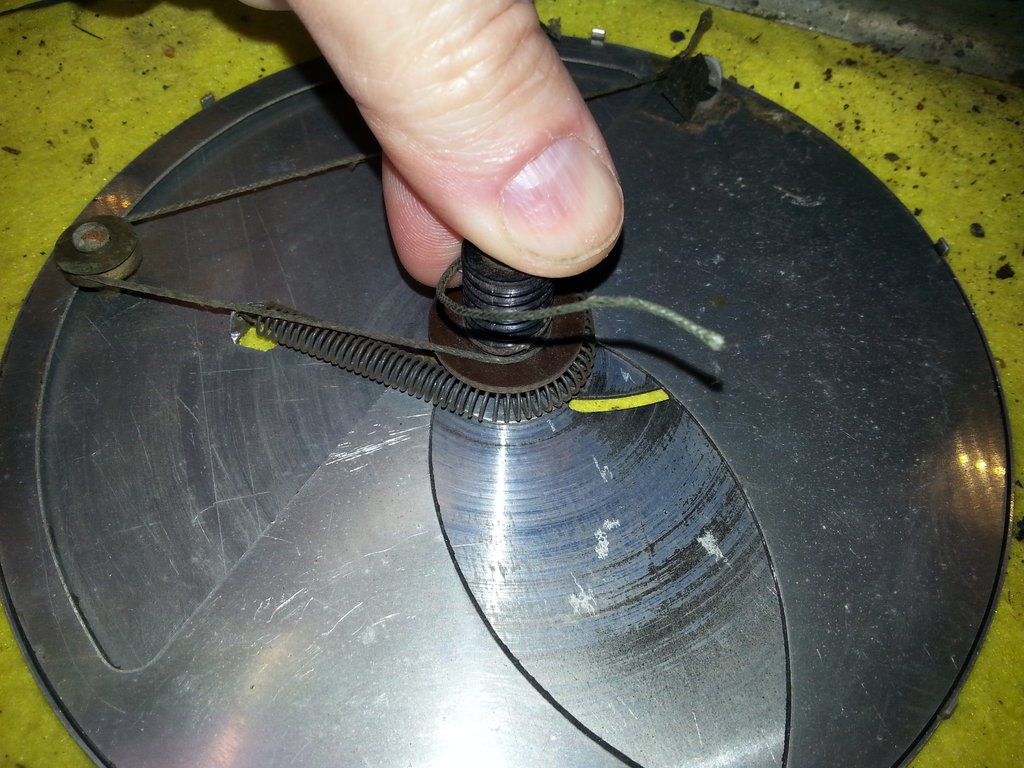
Dial cord and return spring shown in position
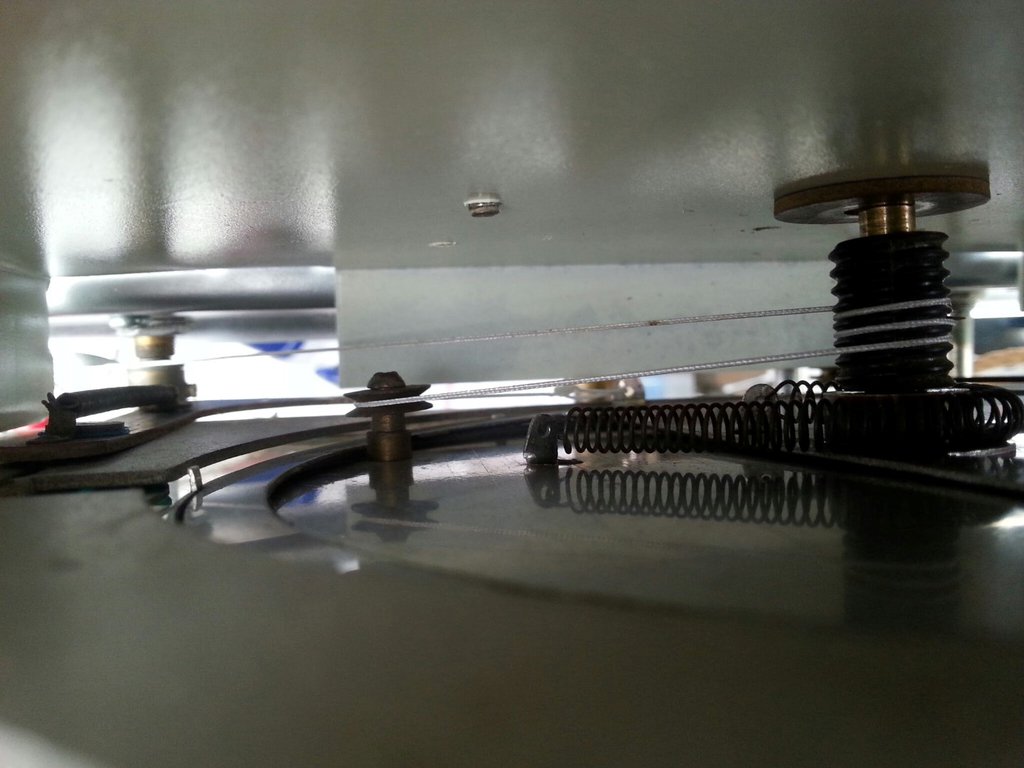
Dial assembly remounted and strung
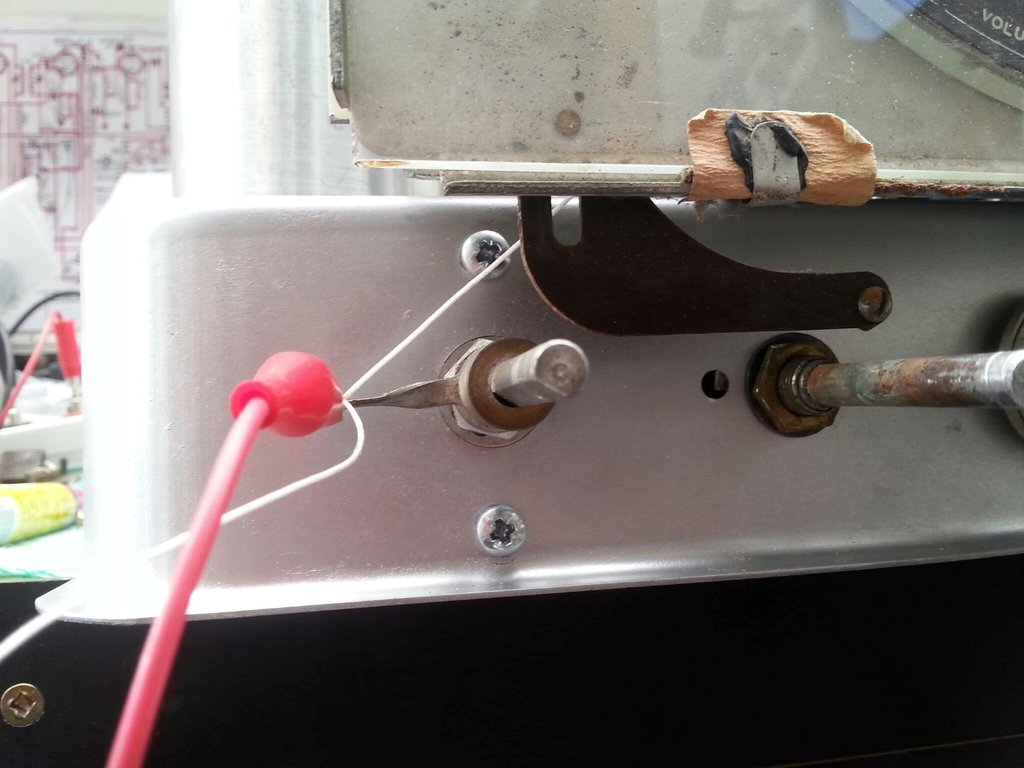
Note use of an aligator clip to hold the cord in place while getting the length and position of the lever correct
Restoration of the dial assembly is a lengthy process, but well worth the effort.
General Construction Notes for Radio Corporation of New Zealand Ltd:
The first digit of the serial number typically indicates the year of manufacture of RCNZ chassis' (although not the decade - that requires a little knowledge of the valves, construction, etc). Sets from around 1934 onwards were often (but not always) constructed in a distinctive pressed 'baking pan' style chassis, seemingly unique to RCNZ.
Model codes beginning with a 0, for example the model 051, are Osram valve versions of the model without the leading 0. Technically the 0 should be an O (for Osram), however the digit 0 was used throughout the site before this fact was discovered.
The E suffix indicates a magic eye option is fitted (in models which were available with or without, such as the model 25).
A and B suffixes appear to be simply updates to the current model, R also appears to be simply an updated model ('R'edesign, perhaps?)
P indicates either a permanent magnet speaker version of a model which also came with an electromagnet speaker (the model 26 for example), or a portable model (like the model 694P). This suffix was used in the mid 50's when Radio Corp was changing over.
N and M indicated miniature valve versions of a model which started with all (or a mix, ie: model 5) of larger valves. One of these two codes may indicate a transitional mixture of octal and miniature - clarification is required.
S often indicates a stereo model. It can also indicate 'self-biased' in the transition period between back-biased and self biased sets where there were models with both methods employed (53S for example)
Finally, other suffixes and prefixes make occasional appearances in the RCNZ lineup - like the 66W (a variant of the long-running model 66) and the 75XA (a 10-valve version of the model 75 with a separate amplifier chassis).
Model nicknames are often sourced from either newspaper advertising, company literature or the NZ Radio Traders Federation official trade-in price books (Particularly Courtenay models from this publication)
In 1954, model numbering changed, to begin with the number of valves (ie: 501 - 5 valves, 1006 - 10 valves, etc) although the final 2 digits don't appear to have much significance. Middle digits of 5 (portable) or 6 (mantle, including clock radio) are used on the AWA-designed plastic-cased sets.